Jared Roesch
Bring Your Own Codegen to Deep Learning Compiler
May 03, 2021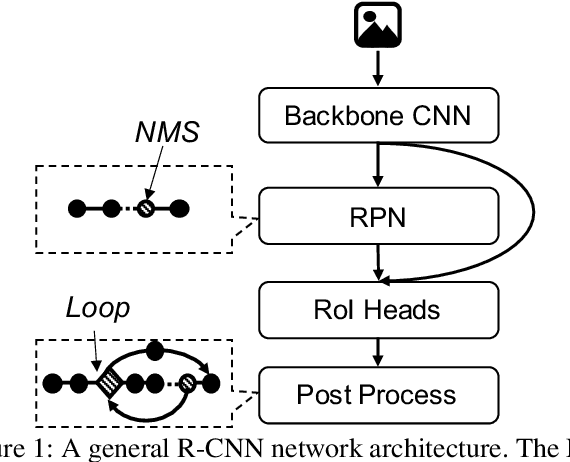


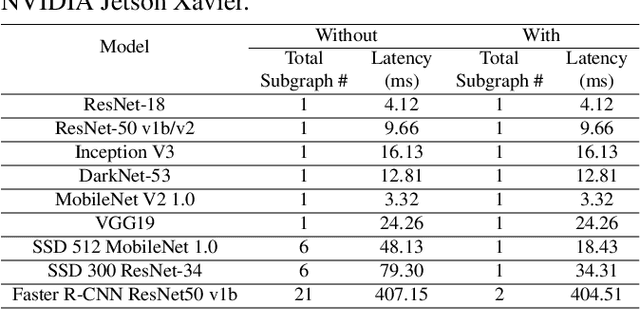
Abstract:Deep neural networks (DNNs) have been ubiquitously applied in many applications, and accelerators are emerged as an enabler to support the fast and efficient inference tasks of these applications. However, to achieve high model coverage with high performance, each accelerator vendor has to develop a full compiler stack to ingest, optimize, and execute the DNNs. This poses significant challenges in the development and maintenance of the software stack. In addition, the vendors have to contiguously update their hardware and/or software to cope with the rapid evolution of the DNN model architectures and operators. To address these issues, this paper proposes an open source framework that enables users to only concentrate on the development of their proprietary code generation tools by reusing as many as possible components in the existing deep learning compilers. Our framework provides users flexible and easy-to-use interfaces to partition their models into segments that can be executed on "the best" processors to take advantage of the powerful computation capability of accelerators. Our case study shows that our framework has been deployed in multiple commercial vendors' compiler stacks with only a few thousand lines of code.
Dynamic Tensor Rematerialization
Jun 18, 2020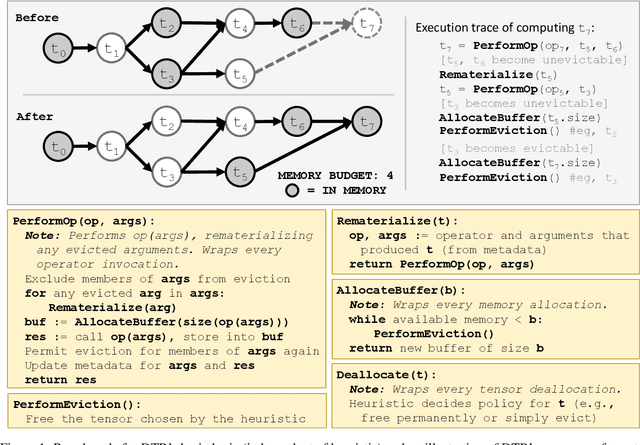

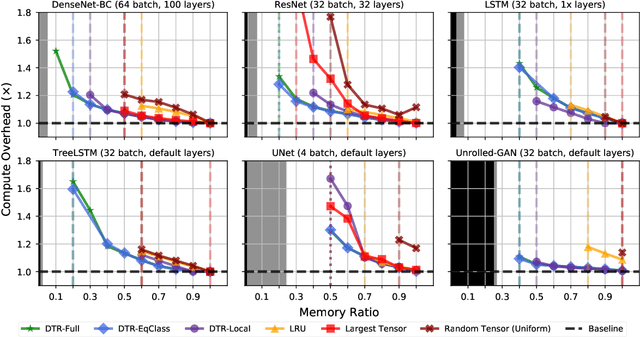
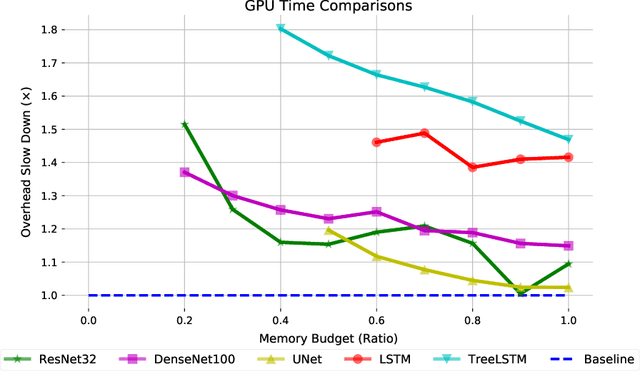
Abstract:Checkpointing enables training larger models by freeing intermediate activations and recomputing them on demand. Previous checkpointing techniques are difficult to generalize to dynamic models because they statically plan recomputations offline. We present Dynamic Tensor Rematerialization (DTR), a greedy online algorithm for heuristically checkpointing arbitrary models. DTR is extensible and general: it is parameterized by an eviction policy and only collects lightweight metadata on tensors and operators. Though DTR has no advance knowledge of the model or training task, we prove it can train an $N$-layer feedforward network on an $\Omega(\sqrt{N})$ memory budget with only $\mathcal{O}(N)$ tensor operations. Moreover, we identify a general eviction heuristic and show how it allows DTR to automatically provide favorable checkpointing performance across a variety of models and memory budgets.
Nimble: Efficiently Compiling Dynamic Neural Networks for Model Inference
Jun 04, 2020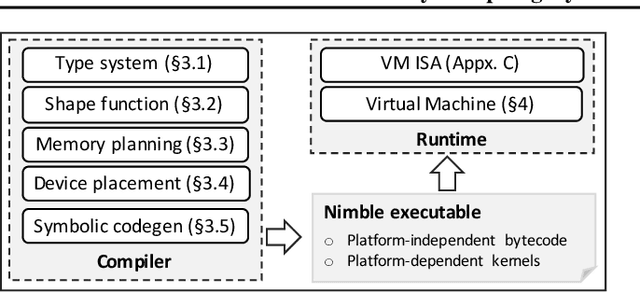
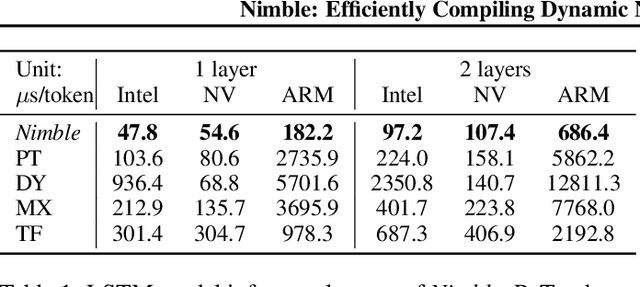


Abstract:Modern deep neural networks increasingly make use of features such as dynamic control flow, data structures and dynamic tensor shapes. Existing deep learning systems focus on optimizing and executing static neural networks which assume a pre-determined model architecture and input data shapes--assumptions which are violated by dynamic neural networks. Therefore, executing dynamic models with deep learning systems is currently both inflexible and sub-optimal, if not impossible. Optimizing dynamic neural networks is more challenging than static neural networks; optimizations must consider all possible execution paths and tensor shapes. This paper proposes Nimble, a high-performance and flexible system to optimize, compile, and execute dynamic neural networks on multiple platforms. Nimble handles model dynamism by introducing a dynamic type system, a set of dynamism-oriented optimizations, and a light-weight virtual machine runtime. Our evaluation demonstrates that Nimble outperforms state-of-the-art deep learning frameworks and runtime systems for dynamic neural networks by up to 20x on hardware platforms including Intel CPUs, ARM CPUs, and Nvidia GPUs.
Relay: A High-Level IR for Deep Learning
Apr 17, 2019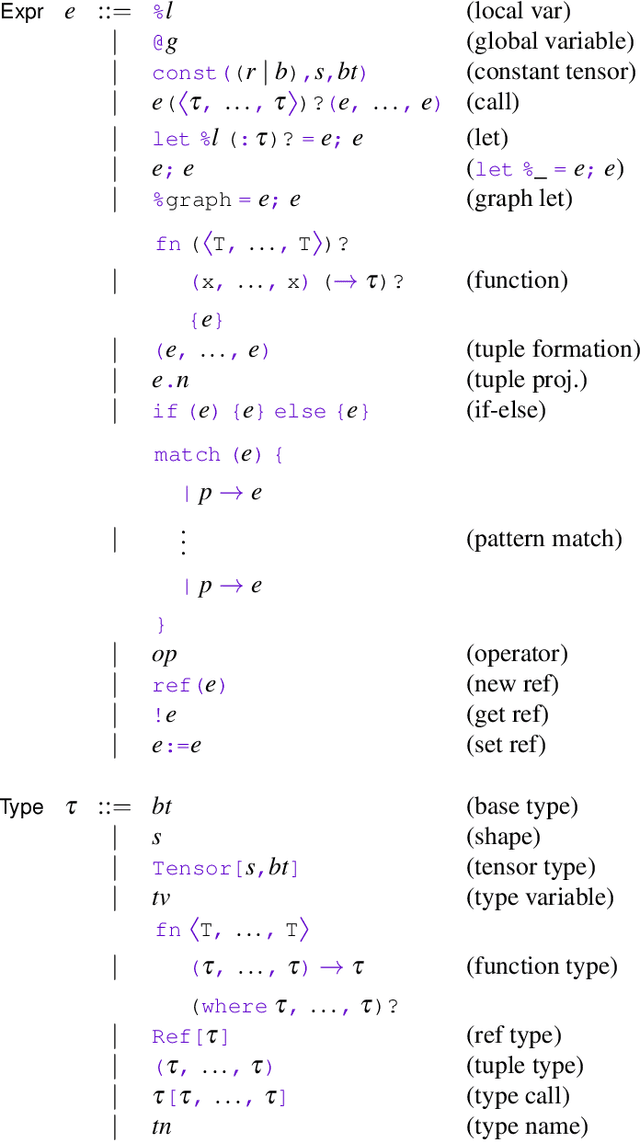
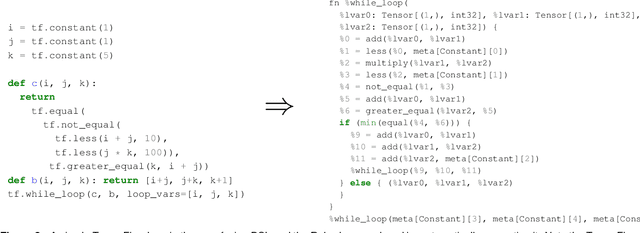

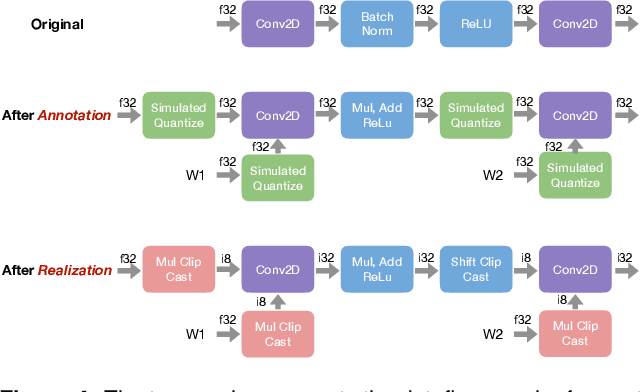
Abstract:Frameworks for writing, compiling, and optimizing deep learning (DL) models have recently enabled progress in areas like computer vision and natural language processing. Extending these frameworks to accommodate the rapidly diversifying landscape of DL models and hardware platforms presents challenging tradeoffs between expressiveness, composability, and portability. We present Relay, a new intermediate representation (IR) and compiler framework for DL models. The functional, statically-typed Relay IR unifies and generalizes existing DL IRs and can express state-of-the-art models. Relay's expressive IR required careful design of the type system, automatic differentiation, and optimizations. Relay's extensible compiler can eliminate abstraction overhead and target new hardware platforms. The design insights from Relay can be applied to existing frameworks to develop IRs that support extension without compromising on expressivity, composibility, and portability. Our evaluation demonstrates that the Relay prototype can already provide competitive performance for a broad class of models running on CPUs, GPUs, and FPGAs.
Relay: A New IR for Machine Learning Frameworks
Sep 26, 2018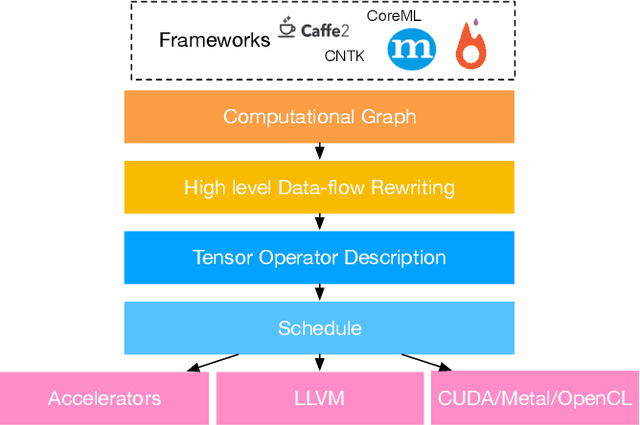
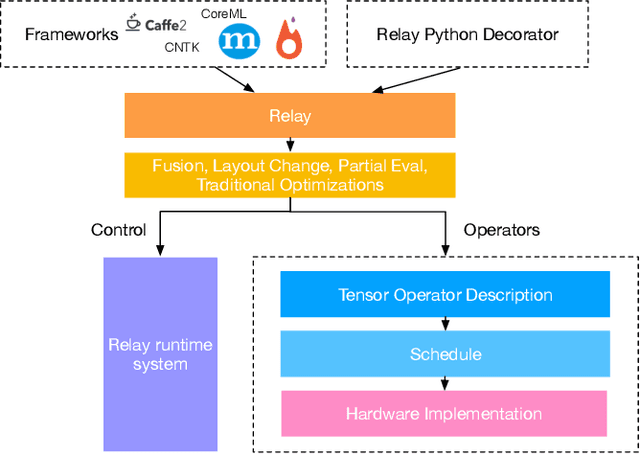
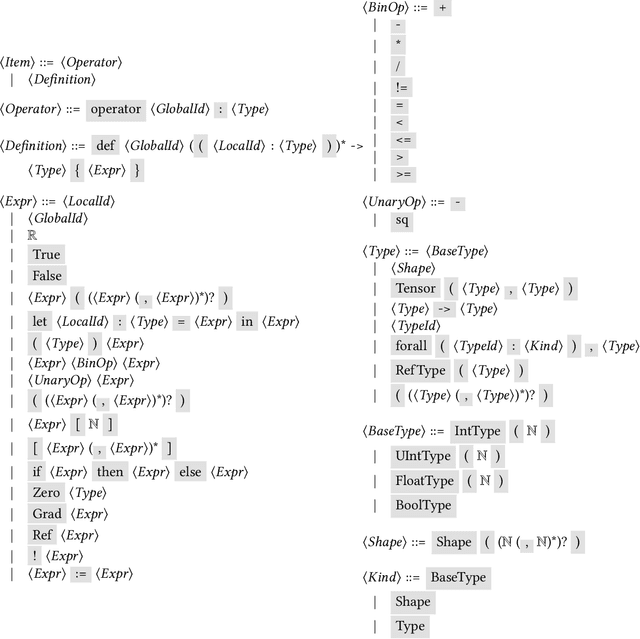
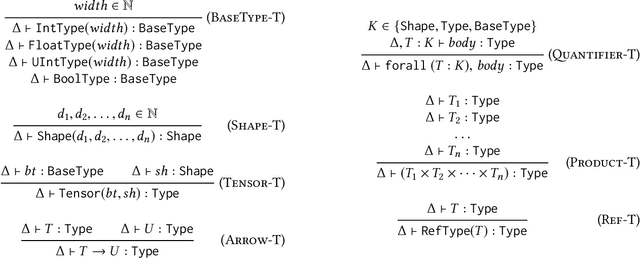
Abstract:Machine learning powers diverse services in industry including search, translation, recommendation systems, and security. The scale and importance of these models require that they be efficient, expressive, and portable across an array of heterogeneous hardware devices. These constraints are often at odds; in order to better accommodate them we propose a new high-level intermediate representation (IR) called Relay. Relay is being designed as a purely-functional, statically-typed language with the goal of balancing efficient compilation, expressiveness, and portability. We discuss the goals of Relay and highlight its important design constraints. Our prototype is part of the open source NNVM compiler framework, which powers Amazon's deep learning framework MxNet.
 Add to Chrome
Add to Chrome Add to Firefox
Add to Firefox Add to Edge
Add to Edge